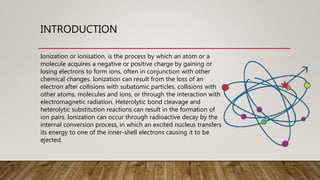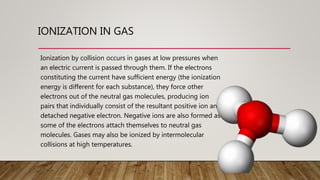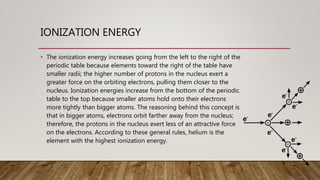This document discusses ionization in three paragraphs. Ionization is the process by which atoms or molecules gain or lose electrons to form ions, which can occur through collisions or electromagnetic radiation. Ionization often occurs in liquid solutions as neutral molecules react to form ions. Ionization in gases occurs when electrons pass through at low pressures, forcing electrons out of neutral gas molecules and forming ion pairs. Ionization energy increases across and down the periodic table as more protons in the nucleus exert a stronger pull on electrons in smaller atoms.







